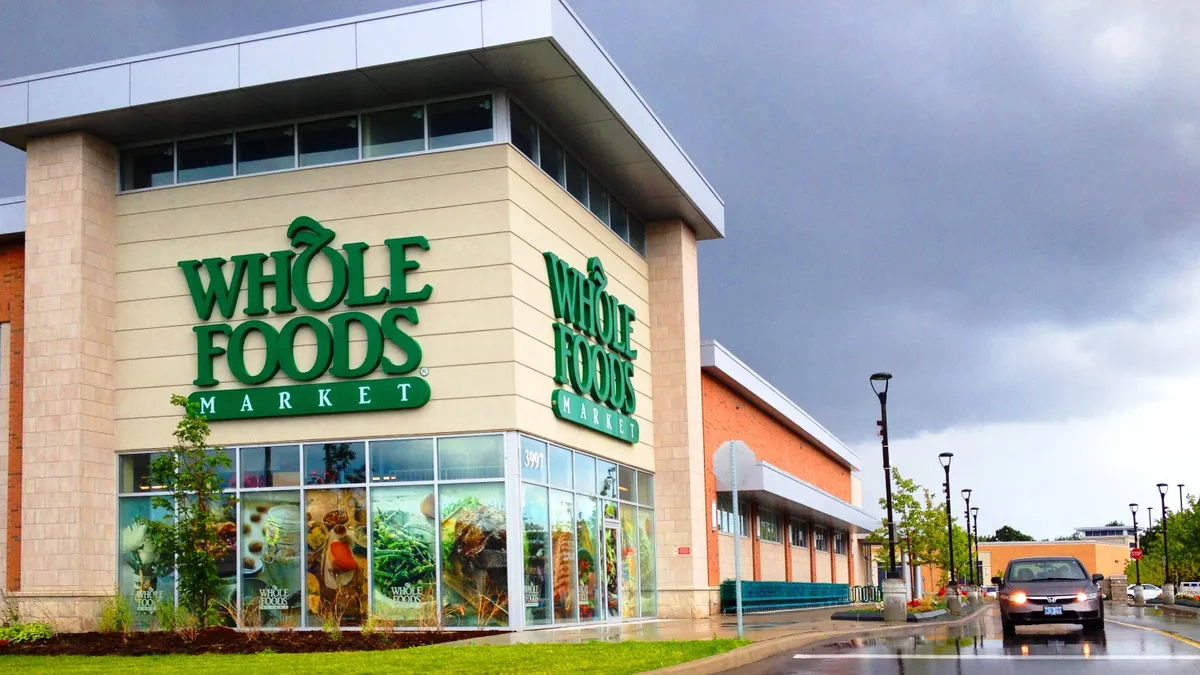Dive Brief:
- Whole Foods stores in Los Angeles and throughout Orange County now offer same-day grocery delivery through Amazon’s Prime Now service, according to a news release. This is the seventh city to add Prime Now delivery through Whole Foods stores. The service offers free two-hour delivery and one-hour delivery for $7.99 for Prime members.
- Meanwhile, Walmart announced it will expand its home delivery service to Charlotte, North Carolina through Postmates. Customers can place orders online or through the Walmart app, and must meet a $30 minimum and pay a $9.95 delivery fee.
- Amazon has said it plans to rapidly expand Prime Now delivery from Whole Foods stores this year, while Walmart plans to offer home grocery delivery in 100 markets — reaching more than 40% of U.S. households — by the end of this year.
Dive Insight:
Walmart’s home delivery program and Amazon’s Prime Now delivery through Whole Foods are still in the early stages of their rollout, but they promise to rattle the industry as they expand nationwide.
Both services offer compelling pricing. A recent analysis of the Cincinnati market found that free two-hour delivery made a basket of Whole Foods products cheaper than the same basket of items ordered through Instacart. It’s yet another way Amazon is leveraging its Prime program to offer value and drive new customers to Whole Foods stores.
Walmart takes a slightly different tack. Its delivery fee is $9.95, and customers are required to hit a $30 minimum, but prices online are the same as in-store. The company offers same-day delivery, though with this setup it’s clearly targeting stock-up trips rather than impulse buys.
The two services will face stiff tests in their new markets. A variety of Los Angeles grocers, including Ralph’s and Safeway, already offer home delivery. The market is also a hotbed for restaurant delivery services like Grubhub, meaning Whole Foods and Amazon will have to work hard to entice shoppers.
The Charlotte market is also jam-packed with grocers eager to capitalize on the city’s growing population. All told, the city has 21 chains and more than 600 stores, according to Chain Store Guide. Kroger-owned Harris Teeter is the market share leader with $1.4 billion in annual sales, but Walmart is close behind at $1.3 billion. If home delivery catches on with shoppers, it could make Walmart the market leader.
Amazon and Walmart are putting significant pressure on not just other grocery retailers, but on Instacart, the delivery company that serves so many of them. That company zoomed out to a commanding lead in grocery delivery last year, but faces its toughest challenge in the months ahead as it tries to stay ahead of competitors and show retailers it’s still a good value.
For most grocers, online ordering and delivery is unprofitable and expensive. Amazon and Walmart have a major advantage here because of their seemingly unlimited investment capital and technology expertise. As the two companies continue to invest in home delivery, store pickup and other services, grocery e-commerce will likely become a two-horse race.









